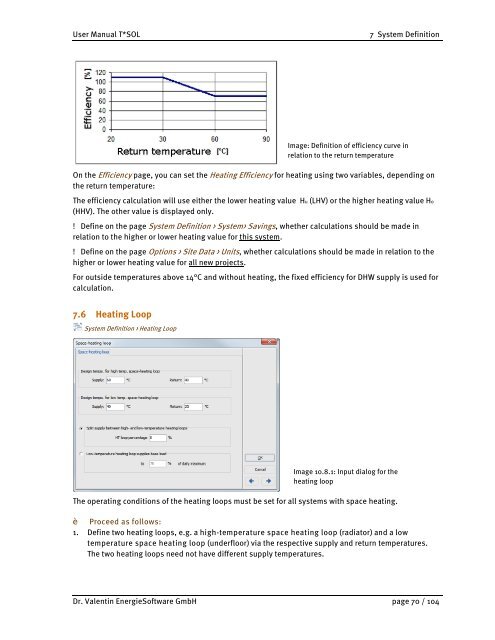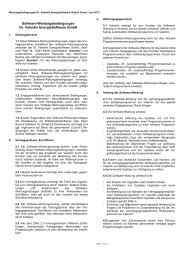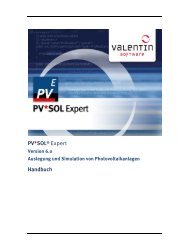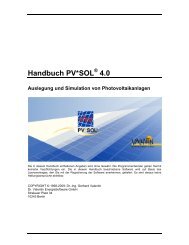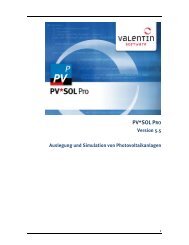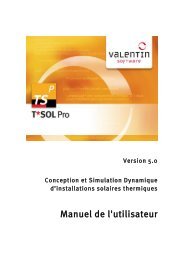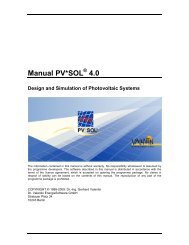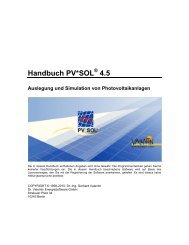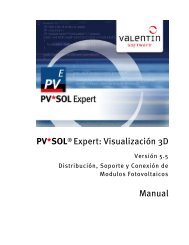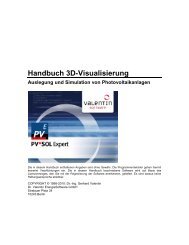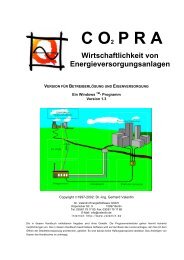Manual T*SOL basic 5.0 - Valentin Software
Manual T*SOL basic 5.0 - Valentin Software
Manual T*SOL basic 5.0 - Valentin Software
You also want an ePaper? Increase the reach of your titles
YUMPU automatically turns print PDFs into web optimized ePapers that Google loves.
User <strong>Manual</strong> <strong>T*SOL</strong> 7 System Definition<br />
Image: Definition of efficiency curve in<br />
relation to the return temperature<br />
On the Efficiency page, you can set the Heating Efficiency for heating using two variables, depending on<br />
the return temperature:<br />
The efficiency calculation will use either the lower heating value Hu (LHV) or the higher heating value Ho<br />
(HHV). The other value is displayed only.<br />
! Define on the page System Definition > System> Savings, whether calculations should be made in<br />
relation to the higher or lower heating value for this system.<br />
! Define on the page Options > Site Data > Units, whether calculations should be made in relation to the<br />
higher or lower heating value for all new projects.<br />
For outside temperatures above 14°C and without heating, the fixed efficiency for DHW supply is used for<br />
calculation.<br />
7.6 Heating Loop<br />
System Definition > Heating Loop<br />
Image 10.8.1: Input dialog for the<br />
heating loop<br />
The operating conditions of the heating loops must be set for all systems with space heating.<br />
Ł Proceed as follows:<br />
1. Define two heating loops, e.g. a high-temperature space heating loop (radiator) and a low<br />
temperature space heating loop (underfloor) via the respective supply and return temperatures.<br />
The two heating loops need not have different supply temperatures.<br />
Dr. <strong>Valentin</strong> Energie<strong>Software</strong> GmbH page 70 / 104


